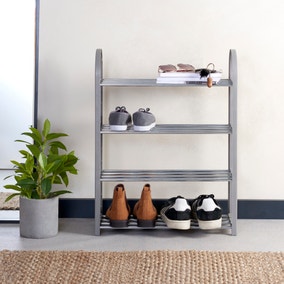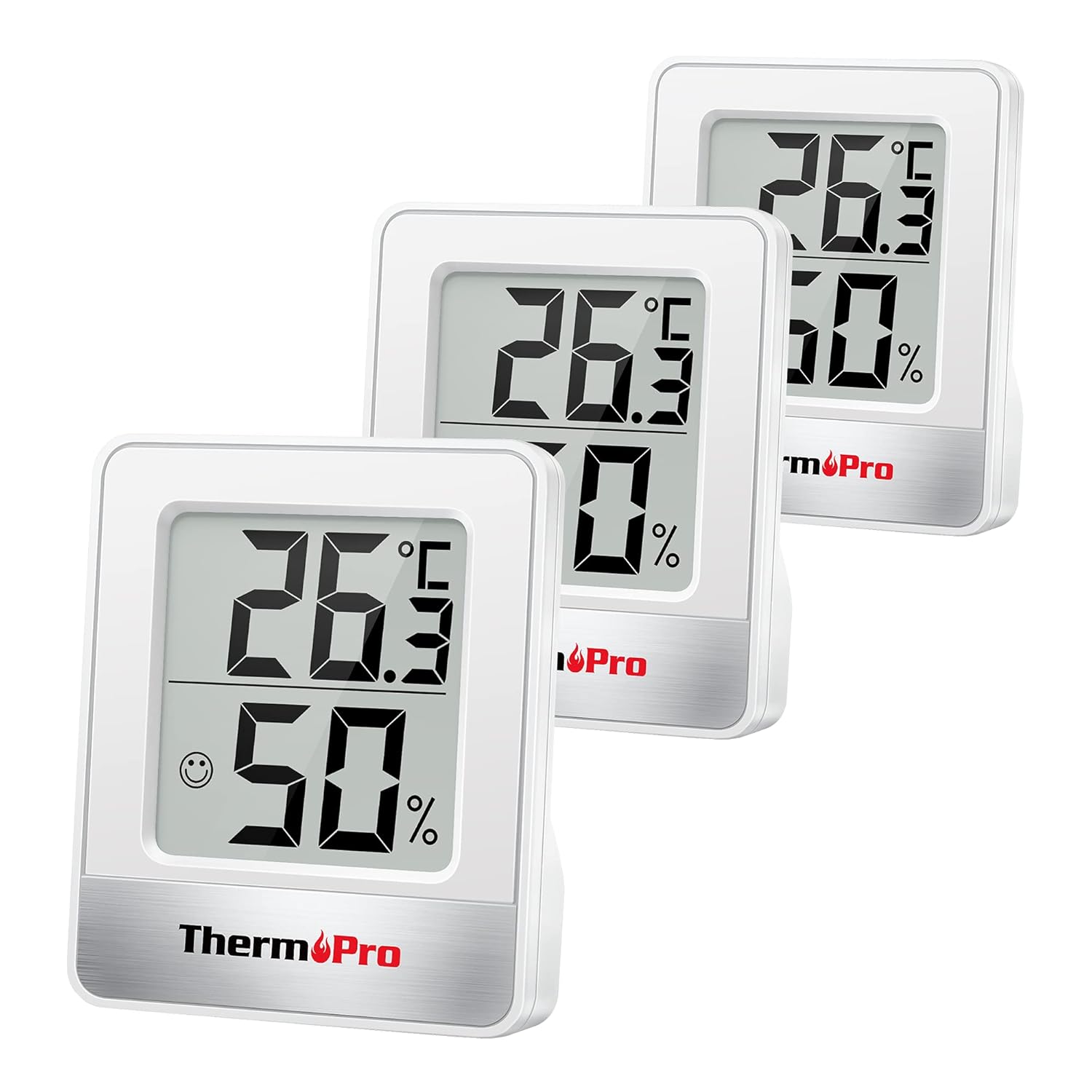Could your clutter be concealing a hidden menace? Why decluttering can help prevent one of winter's biggest problems
Decluttering doesn't just clear mess, it also makes it easier to manage winter moisture, damp and mould. We reveal the main clutter culprits and the solutions

While I'm all for the aesthetics of a neat and tidy home, it's easy to fall into the trap of surrounding yourself with more of everything, particularly during the winter months. Blankets, cushions, books for reading by the fire and overflowing wardrobes stuffed with woolly jumpers are all part of our semi-hibernation mode.
But, and there's a big but. With winter weather comes the increased risk of condensation, damp and mould as the colder temperatures outside create the perfect atmosphere for moisture laden surfaces inside.
The more you have piled up, the more chance there is of moisture building up without you realising. We asked the experts where the worst clutter hotspots are and how to make sure your love for cosy corners doesn't cause problems.
How decluttering helps with damp and mould
One of the key tools in reducing the humidity in your home, high levels of which can lead to mould and damp, is ensuring there is sufficient airflow. This means the more stuff you have, the more the piles of clutter turn into a barrier to air moving around your home.
So, even if you perform house burping every day, the reality is the moisture will seep into your belongings, and if there's no obvious gaps, there's no room for air to flow. Before you know it, the moisture will take over and the unwanted presence of mould spores will start appearing.
“Decluttering helps combat damp by allowing your home to breathe,” confirms Max Wilson, co-founder of Pocket Storage. “Removing excess items improves air circulation, which prevents moisture from settling."

Max Wilson is co-founder of Pocket Storage, a self-storage service offering 24/7 access in a range of city centre locations.
How to declutter to reduce the risk of mould and damp
Of course, the added problem is that certain rooms and areas in our home are natural depositories for our belongings. Wardrobes, boot rooms, utility rooms and so forth all have a valuable purpose in your homes.
Bring your dream home to life with expert advice, how to guides and design inspiration. Sign up for our newsletter and get two free tickets to a Homebuilding & Renovating Show near you.
But, even in these spaces less is more, so where and how can you declutter and organise your home is such a way that you avoid creating hidden hotspots for mould and damp?
1. Declutter your bedroom and the contents of your bedroom storage
Although it's easy to associate mould with bathrooms and kitchens where moisture laden air is more common, even with the best home ventilation methods in place, the reality is, mould in bedrooms is also an issue and one we need to avoid.
“Under beds, behind wardrobes and inside cabinets are prime spots for trapped moisture. These calm, stagnant spaces create the perfect environment for condensation and mildew," says Max Wilson.
"Old clothes, bedding and soft furnishings all trap damp air, particularly if they’re tightly packed into wardrobes or pushed under the bed," confirms Georgina Shepherd, cleaning expert at Housekeep.com.
"Avoid overfilling drawers and cupboards in general," she notes. "Packed spaces limit airflow and can trap moisture. Make sure you’re decluttering these regularly to keep the air moving."
Personally, I start the autumn months by sorting through clothes and items that I haven't ended up wearing or using in the summer before I even think of getting my winter woolies out.
Those items you do want to put away until it's warm again? "Use sealed storage boxes,” recommends Max. "And, if you wash clothes before storing them away for winter, make sure the items are full dry before you pack them up," recommends Georgina. Any slight level of dampness will linger once it's tightly packed away.
Make sure you also have enough space in between items that you leave in your wardrobe and consider adding wardrobe moisture absorbers. And finally, make sure air can move around the bedroom too. "Furniture should be slightly offset from walls and the tops of storage units kept clear to encourage airflow,” says Max.
Shop these items to help manage moisture
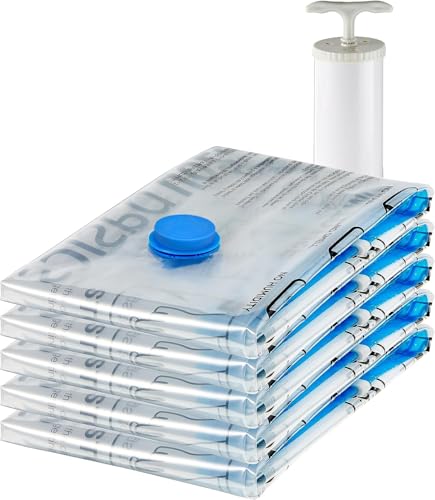
A pack of five large clear vacuum storage bags with airtight valve and hand pump for storing clothes or bedding
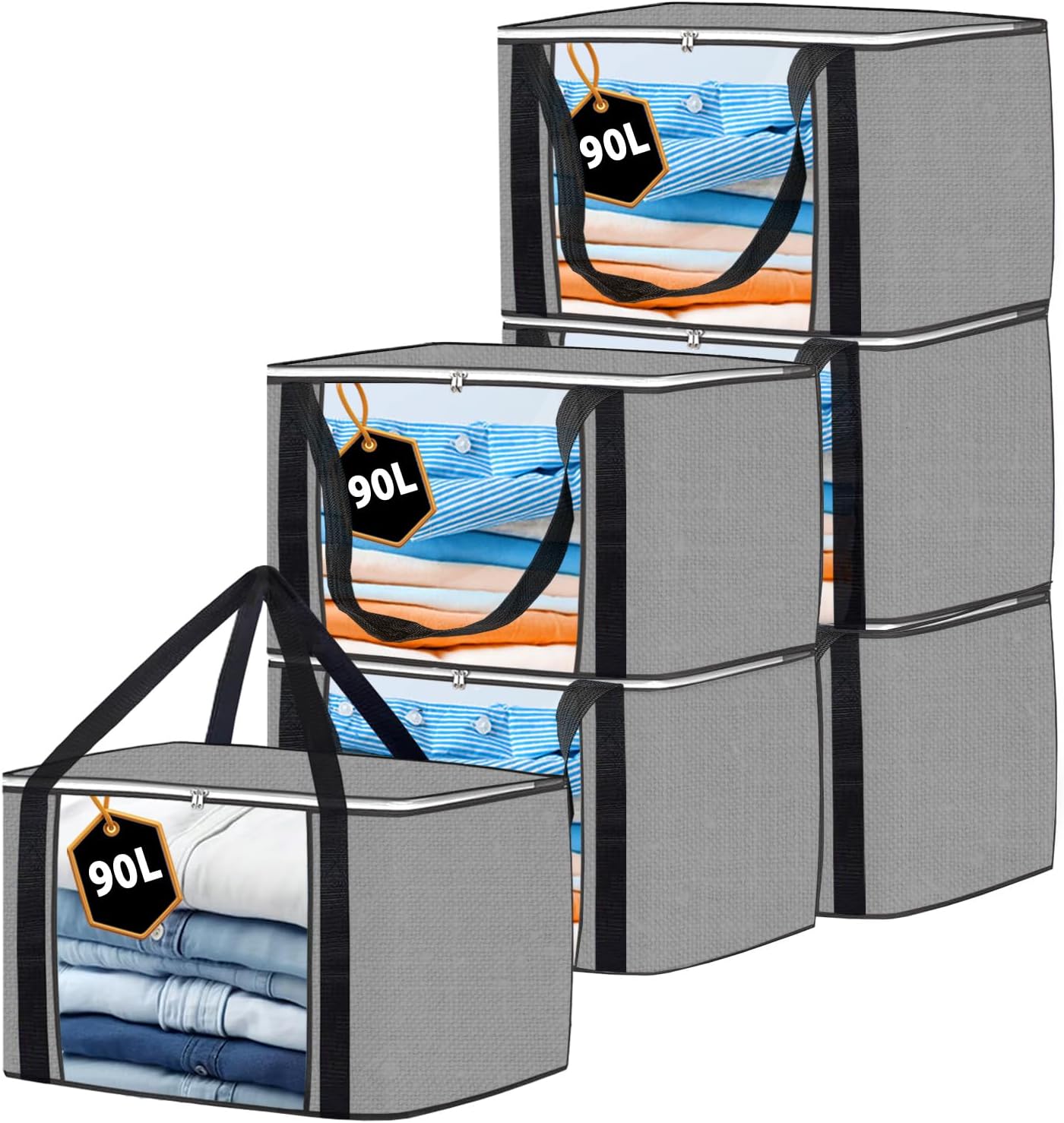
Three sided zipper storage bags that are both moisture and dust mite proof
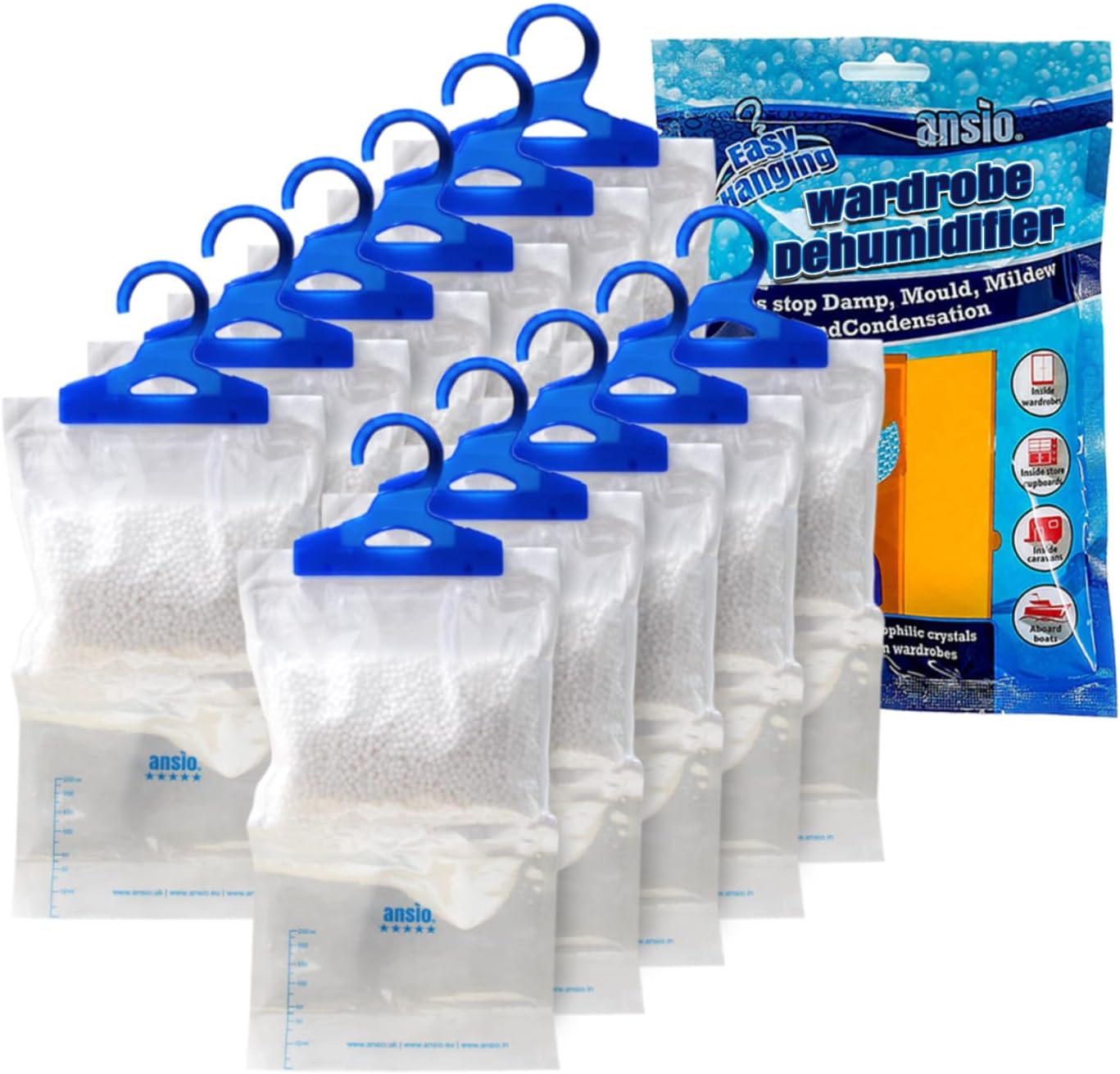
A pack of 12 moisture absorbing bags for use in wardrobes. Hang amongst your clothes

Georgina is one of Housekeep.com's cleaning experts, providing knowledgeable advice to clients and staff on how to keep your home hygienically safe and sound.
2. Make sure your boot, utility room and hallway aren't a haven for humidity
Wet wellies, soggy winter coats, damp furry pets and laundry left out to dry are all common in homes during the winter, but as well as being unsightly, they are also impacting the air you breathe.
"Shoes, particularly damp ones, are silent culprits for trapped moisture," confirms Max Wilson. "Overcrowded shoe racks can encourage mildew and musty odours. Declutter shoes you don’t wear often, let wet footwear air out and use breathable storage rather than sealed plastic boxes."
Take the same approach with outdoor coats in boot rooms or hallways. Make sure you have somewhere ventilated to dry them when they get wet, and don't let too many pile up on hooks where there is limited airflow and opportunity for them to dry.
And, on the subject of drying, if you do have to dry laundry inside, make sure you use the best dehumidifier for drying laundry such as the DeLonghi DEX212F 12L Tasciugo AriaDry Dehumidifier which I personally tested to great success. In the winter I use it in conjunction with the Dry-Soon Deluxe 3 Tier Heated Air Drier from Lakeland, to speed up the process.
3. Don't let papers, books and magazines build up
Whether you're a bedtime reader or a magazine by the fire kind of person, having piles of books close to walls or on the floor in any room may well give your home a country cottage vibe, but isn't always the best idea.
"Paper and cardboard are usually the biggest culprits when it comes to damp," says Georgina. "They absorb moisture easily, so aoid stacking paper or cardboard against walls, as they can soak up moisture and encourage mould growth on the surface behind them."
In living rooms for example, if there isn't a direct heat source such as a nearby log burner to dry them out, the damp will build up and your once treasured tomes will quickly turn into humidity filled horror stories.

Consider installing book storage ideas for the ones you simply can't part with, and if you opt for freestanding shelving over fitted, make sure there's a small gap between the wall and furniture to allow air to circulate – a rule which stands for all freestanding furniture within your home.
If you also have a home office and need to store paperwork, "store important documents in folders and get recycling out as soon as possible," says Georgina. And, stick to the minimum house temperature to avoid mould and damp for a clean and healthy workspace.
4. Regularly declutter your bathroom cabinet
While out of sight out of mind is an easy trap to fall into, in winter it's one you must avoid if you want to keep on top of your home's moisture levels. While you may have the best bathroom extractor fan working feverishly every time you shower or bath, the chances are you also have a bathroom mirror with lights and storage, and vanity units with drawers or shelves.
"In the bathroom, too many bottles, baskets or towels can absolutely trap condensation," confirms Georgina, meaning it's time to get rid of those samples and half used travel sized toiletries that are cluttering up the shelves inside.
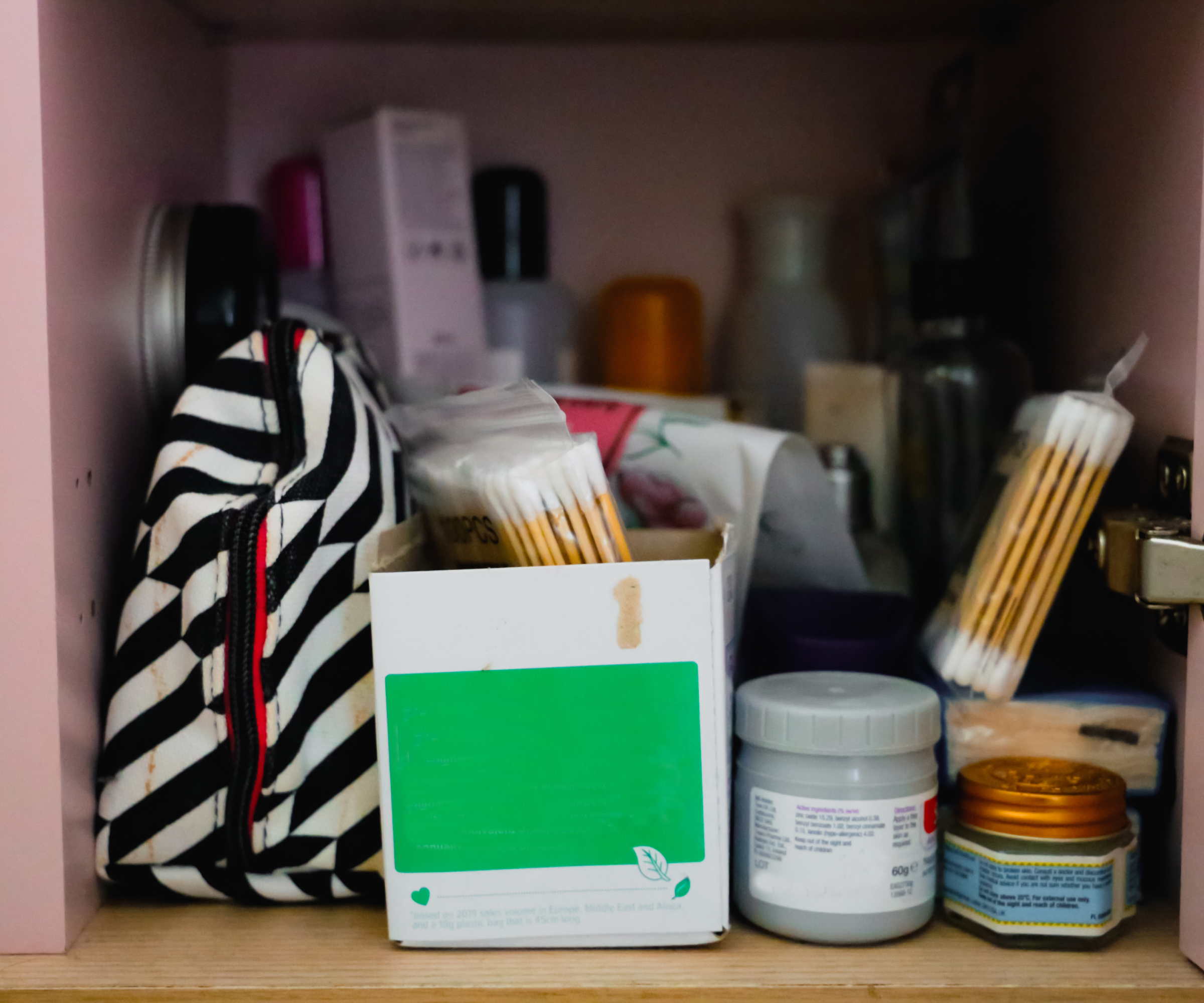
"Also try to keep bathroom surfaces clear and avoid storing items directly on windowsills or around the bath or shower," advises Georgina. "Air out bath and shower loofahs and accessories after use, and avoid leaving them in damp corners where they can stay wet."
Try not to store too many towels in your bathroom as well. Make sure damp ones can be dried using a heated towel rail or bathroom radiator, and keep clean, dry ones in a linen or airing cupboard, rather than the bathroom itself.
Georgina's final advice for bathrooms, "don't forget moisture can spread beyond your bathroom, too, so keep an eye on hallways or spaces just outside bathrooms where condensation can linger (e.g. after a shower) and make sure you haven't got clutter in your corridors or on landings.
"Avoid storing clothes or laundry directly outside your bathroom, for example," she adds, "where moisture levels are highest."
Discovered mould while decluttering? Follow this expert advice for removing mould from walls and make sure you also check these other hidden mould hot spots as part of your efforts to keep the moisture levels in your home as low as they can be this winter.

Sarah is Homebuilding & Renovating’s Assistant Editor and joined the team in 2024. An established homes and interiors writer, Sarah has renovated and extended a number of properties, including a listing building and renovation project that featured on Grand Designs. Although she said she would never buy a listed property again, she has recently purchased a Grade II listed apartment. As it had already been professionally renovated, she has instead set her sights on tackling some changes to improve the building’s energy efficiency, as well as adding some personal touches to the interior.
